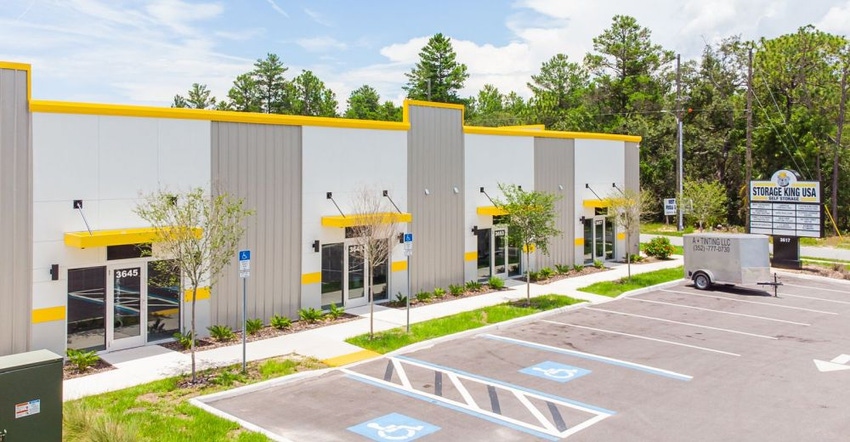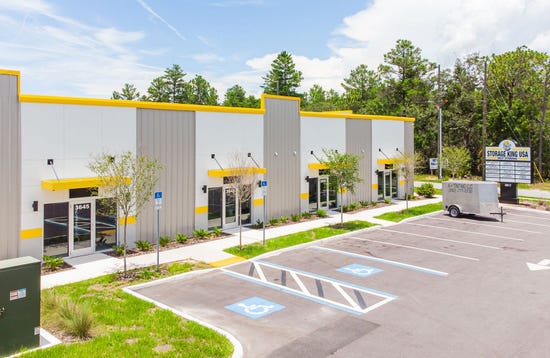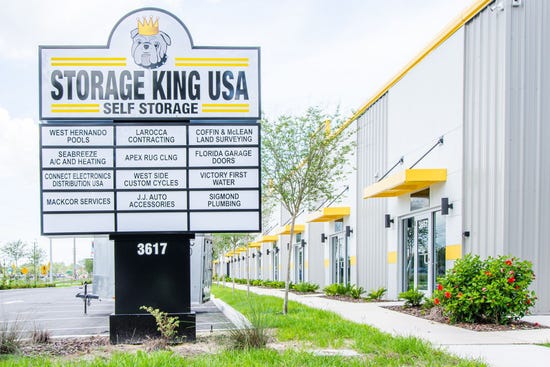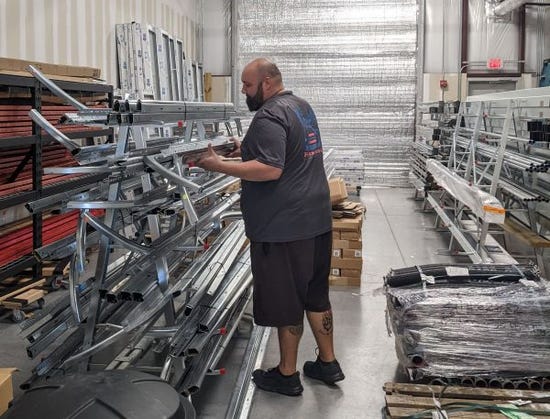Flex workspace is being offered by some self-storage operators as they seek creative ways to capture more rentals. It can be convenient for remote workers, small-business owners and startups, artists … anyone who needs a place to do business. Read about benefits and key considerations.

With tens of thousands of self-storage facilities already in existence and new ones being built all the time, it’s understandable if you feel you have a hard time differentiating your store from competitors. Though having the newest property or lowest rates in the market might help, these are temporary solutions.
A discerning self-storage operator helps his business stand out through product and service diversity. I’m talking about ancillaries such as retail sales, vehicle storage, wine storage and others. A relatively new entrant to the mix is flex workspace, which can help you attract a broader customer base and drive additional revenue.
At Storage King USA, we’ve found flex space to be in high demand across our 110 locations. Broadly defined, it’s simply a building or unit that combines elements of warehousing with office or retail. It’s really a multi-purpose workspace for wide range of users including small businesses and startups, entrepreneurs, artists, remote workers, and anyone else who needs a place to conduct business and maintain a local presence in the market.

Storage King in Spring Hills, Florida
Flex space has a higher ceiling height and is larger than a typical self-storage unit, usually 14 to 16 feet high and 1,500 to 1,700 square feet. In addition to a large rolling door, it usually also has a traditional pedestrian door and may even have a loading dock. It’ll have electricity, lighting, plumbing, a bathroom and often HVAC.
We offer flex space at approximately 15% of our facilities. The tenants who are attracted to this product include tradespeople such as plumbers, electricians, kitchen and bath remodelers, wholesalers, resellers, and home-based businesses or distributorships that have outgrown their garage or home office. The spaces have leased up quickly, sometimes with a waiting list before construction is even complete.
Given the relatively inexpensive cost to build, especially if you’re expanding an existing self-storage facility, flex space often provides an attractive return on investment. Let’s look at some other benefits as well as how to build and operate it successfully.
Benefits
Why would a tenant choose to rent flex space from a self-storage operator rather than at a traditional retail building, office or warehouse? There are a few reasons.
First, flex space is customizable and can serve many functions. We often work with the tenant, who has pre-leased the space, to design it according to their needs. Moving forward, the user can add or remove features as necessary. For example, they can use it as a storage warehouse, retail showroom or manufacturing facility.
Unlike office leases, which often require a 10-year commitment and are negotiated extensively, flex space lease terms are as short as several months, with the standard agreement being one to three years. It also generally rents for less per square foot than a traditional office. Finally, there are no common-area charges, which are typical with office buildings.

Signage for Storage King’s flex space
Now that you understand why a tenant would come to you to seek flex space, there are two very good reasons why you should provide it. First, it’ll allow you to diversify your product offering. Any given market will only be able to absorb so much self-storage. Adding flex space allows you to offer something the competition may not be providing. It also optimizes the use of your land without cannibalizing existing revenue streams.
It also allows you to maximize your market reach. Smaller units will appeal to traditional self-storage renters, whereas flex space attracts commercial renters and a whole host of other professional users, thereby expanding your renter pool.
Feasibility
Beyond the typical risk inherent in any self-storage development, there are nuances with flex space of which to be aware. The product is adaptive by nature, and your end users will dictate the type of space you build. For example, someone using it to showcase retail product will want a very different look and feel than someone using it as an office, art studio, warehouse or manufacturing location.
Whereas the typical self-storage renter wants a safe, dry, secure place to store their belongings, once they’re in their unit, they don’t care if your facility is in a visible location. In fact, they may prefer that it not be. A flex-space tenant on the other hand may be very concerned about visibility and traffic, especially if they’re using the space for a customer-centric business. You need to provide sufficient access, visibility and signage for your tenants.
You’ll also have to determine whether your flex space has the potential to disrupt your broader self-storage operation and cause net harm to your bottom line. For example, leasing to an auto-repair shop might cause parking overflow, preventing self-storage tenants from easily accessing their units. It could also create an unsightly image for the facility if there are vehicles in various states of disrepair.

The flex workspace for Florida Garage Door Pros, a Storage King tenant
Construction Concerns
Aside from determining whether your self-storage property is properly zoned for flex space, your municipality could have strong views on the construction materials you use, the aesthetics and even the types of tenants you allow. Be prepared to answer questions from officials and somewhat flexible about design. Further, this kind of construction requires different knowledge and relationships than traditional self-storage. You’ll need the right experts to help you plan and build it.
Also, consider the order of events. Even if you have a strong sense of the particular user you intend to target, you have to decide whether to prospectively build your flex space and modify it later based on specific tenants’ needs, or sign up tenants first and design it based on their input. Lining up customers in advance certainly mitigates revenue uncertainty. On the flip side, continued customization can add to permitting expenses, lengthen the time it’ll take to complete the project, and exacerbate the headaches of dealing with multiple vendors and trades.
Operation
In terms of operation, flex space will rent more in line with commercial, industrial and office space in the market than traditional self-storage. Size, vintage, location and amenities all matter more to flex-space tenants than your traditional customers. So, you need a deep understanding of the competing vacancies and current market trends.
Also, think carefully about marketing. Leasing flex space isn’t as simple as listing it on a self-storage aggregator website or even your own website. Given the various tenant profiles, it needs to appear anywhere potential tenants usually seek space, for example websites like CoStar or LoopNet, or even commercial real estate brokers. You’re going to need marketing campaigns created specifically for this ancillary product.
The lease is another important consideration. It should be far more than detailed than your self-storage rental agreement, as the space involves many more amenities. Work with a legal expert to ensure it’s written appropriately.
There are many factors to adding flex space to a self-storage facility. However, if you conduct the necessary due diligence and conclude that it makes good business sense, you may be pleasantly surprised by the product’s ability to differentiate your business, reach a broader customer base and ultimately benefit your bottom line.
Michael Wachsman is director of acquisitions for Andover Properties LLC, an investment firm that owns, operates and develops commercial property in the United States, including the Storage King USA brand. He joined the company in 2015 with a decade of experience in real estate acquisition and asset management. He’s been involved in the acquisition and disposition of self-storage assets totaling more than $800 million. To reach him, call 212.813.0141 or email [email protected].
About the Author(s)
You May Also Like





